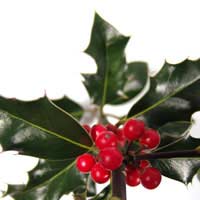 Many of the beautiful plants we choose for our gardens produce berries. A large percentage of these berry-producing plants are responsible for deaths every year.
Many of the beautiful plants we choose for our gardens produce berries. A large percentage of these berry-producing plants are responsible for deaths every year.
A Fatal Feast.
A host of plants produce tasty looking berries that could be a last meal for anyone unwise enough to sample them.
The Question of Rowan Berries.
There is much debate as to the toxicity of Rowan berries. These are 4-8 mm bright orange or red fruit that appear in dense clusters. Some sources say the berries are poisonous while others state the opposite. If we look at the fact of the matter, both sources are right. The berries contain parasorbic acid in their raw form. In this manner, they are indeed poisonous. On cooking however, the parasorbic acid is converted into harmless sorbic acid, which is quite digestible. Rowan berries are indeed used to make a jelly that goes well with wild game and as jams and preserves. If you still feel doubt about using Rowan berries then for your own peace of mind, leave them out.
Deliciously Deadly Decorations
Another pair of plants that have caused fatalities, particularly around Christmas time, is the berries of both Holly – Ilex and Mistletoe – Viscum album.
It especially pays to watch children around the sprigs of these plants that grace our homes as part of the holiday season cheer. The berries of these poisonous plants may be mistaken for just another tasty Christmas treat with fatal results.
It may be far safer to use one of the many plastic imitations that abound at this time of year rather than risk a fatality.
If you have children or pets remove any plants that fall into this category from your garden and substitute them with something far less lethal.
If any of your Houseplants produce poisonous berries you can substitute them with artificial ones or at the very least ensure they are up out of harm’s way.
Teach Them While They are Young.
The best way to help avoid a poisoning is through education and commonsense.
Teach your children never to eat any part of a plant, especially the berries no matter how safe they appear.
Teach them to recognise edible fruits, berries, and vegetables. If they cannot identify what it is, they should not attempt to taste it without first checking with an adult. The same advice also applies to adults. Never taste unidentified berries yourself.
Just because some berries are safe for birds and animals to eat does not mean they will not have a lethal reaction on humans. This mistake has cost lives in the past.
Never leave small children in a garden containing suspect or hazardous plants by themselves. Children have a natural curiosity and if it appears good enough to eat, they will try it.
Weed Out the Toxins.
If in doubt about a berry producing plant in your garden, take a sample of the leaves and berries along to a reputable nurseryman or Garden centre for proper identification. Most are only too happy to assist in identifying what is in your garden and will be able to advise you if it is dangerous or not.
When it comes to poisonous plants in the garden, especially the berry producing varieties, if there is even the slightest doubt about the safety of having the plant in your garden leave it out and select a safer alternative.
If you suspect someone has eaten poisonous berries seek medical attention immediately. Take a sample of the berries with you, as this will aid the medical staff in identifying the toxin and treating the patient.
It is wiser to miss out on a few colourful berries than have those same berries cost the life of a loved one or pet.





It is not explained in the article the level of toxicity of the Boston Ivy berries. Can anyone tell me exactly? Thanks
If a child ate one raw rowan berry, what would be the likely outcome?
@no If a Rowan Berry was eaten raw your child may suffer from stomach ache and diarrhoea.
I think my dog may have eaten some yew berries he he seems ok should I be worried?
@Ann. You should call your vet and tell them how many the dog ate…they’d be much better placed to advise you.
It would be really useful to indicate a possible safe alternative to the poisonous plants listed. For example, my plan of covering a long metal fence with Virginia Creeper is now discarded, but what evergreen, colourful plant is a safe alternative?
@Shoshanna. Great idea…we will do some research and make some suggestions in the future.
With all this information, and the suggestion that small and while they are young children, should be made aware of these dangers at home! Then surely the best place to teach them, and while they are receptive, is to be taught in “SCHOOLS”!!!
@the-keeper. Yes but parents cannot expect schools to take on every responsibility in relation to young children. I would say this is a parent’s problem not a teacher’s.
My 6 month puppy as eaten poison ivy or the berrys result of that was I at to put him to sleep he ended up with breathing problems and stomach problem s
@vinny. That’s really sad, thank you for alerting our readers to this.
Are white beam berries safe to eat cooked to jelly?